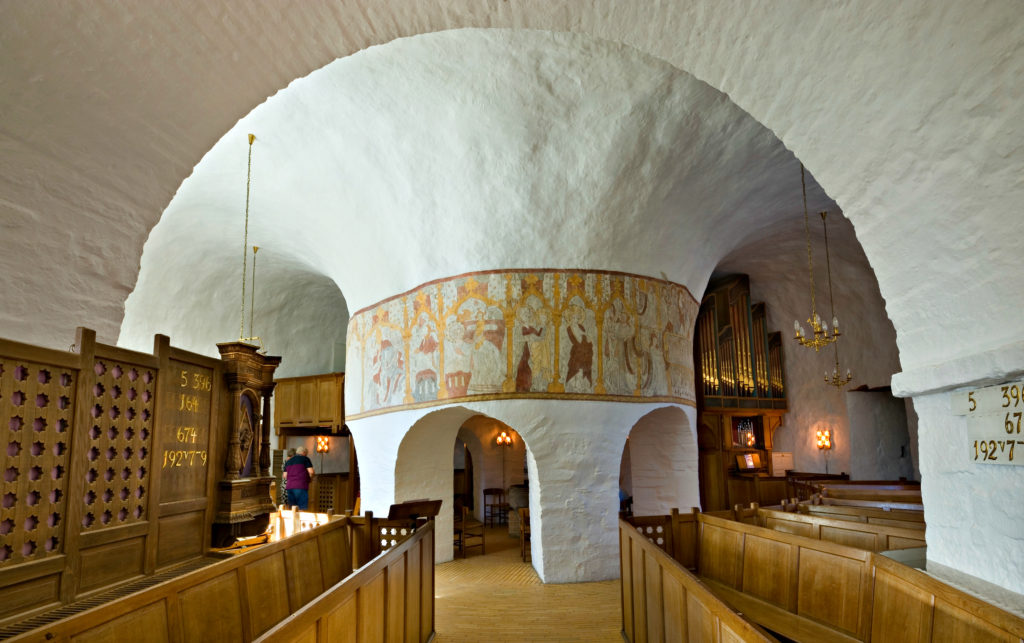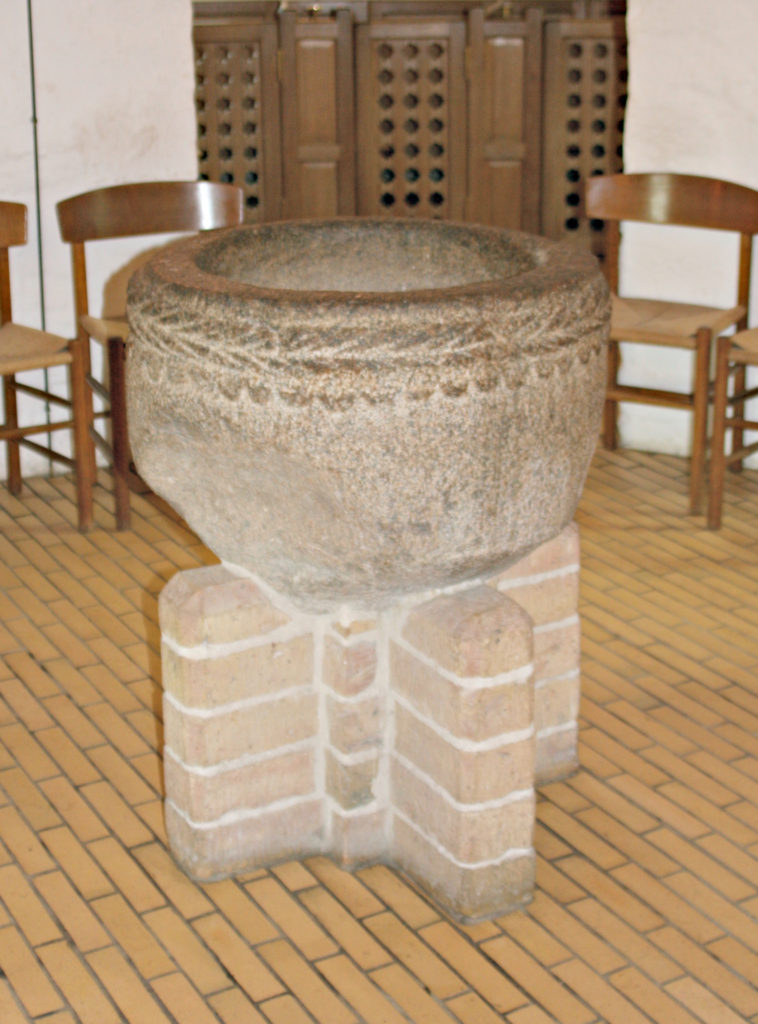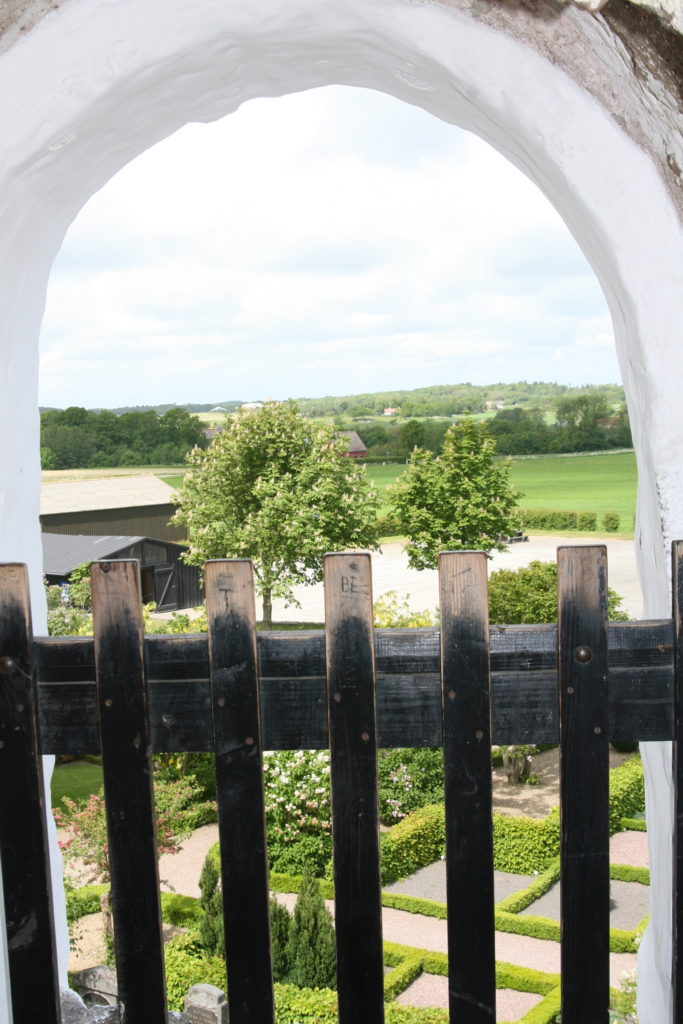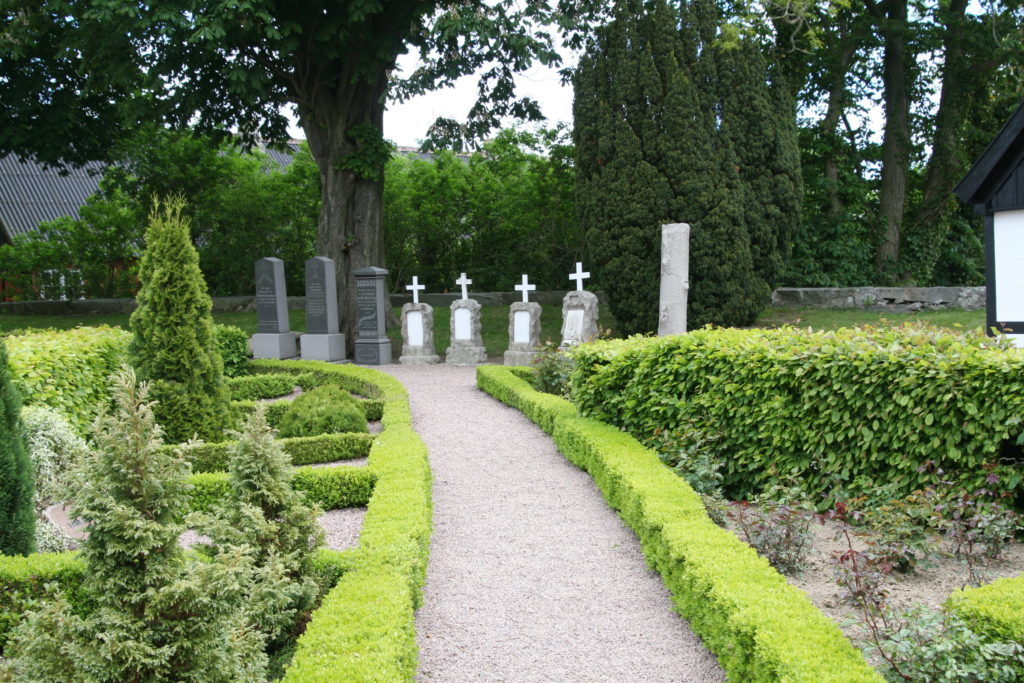
Bornholm, Denmark
Bornholm is an island in the Baltic Sea and is part of Denmark, but geographically, it is closer to Sweden. We wanted to go to Bornholm because my paternal grandmother’s ancestors hailed from there. We flew from Copenhagen to Bornholm where we met a private guide who would show us the sites of Bornholm. We were very lucky because we had e-mailed back and forth several times before the trip and she was able to include places where my ancestors had likely been and also the church where they had worshiped. The pictures below are of the small plane we took from Copenhagen and one of the streets in the town of Ronne. The yellow houses were very common, especially in Ronne and Nexo. Sweden donated about 300 of these houses as Bornholm was recovering from damage following World War II.
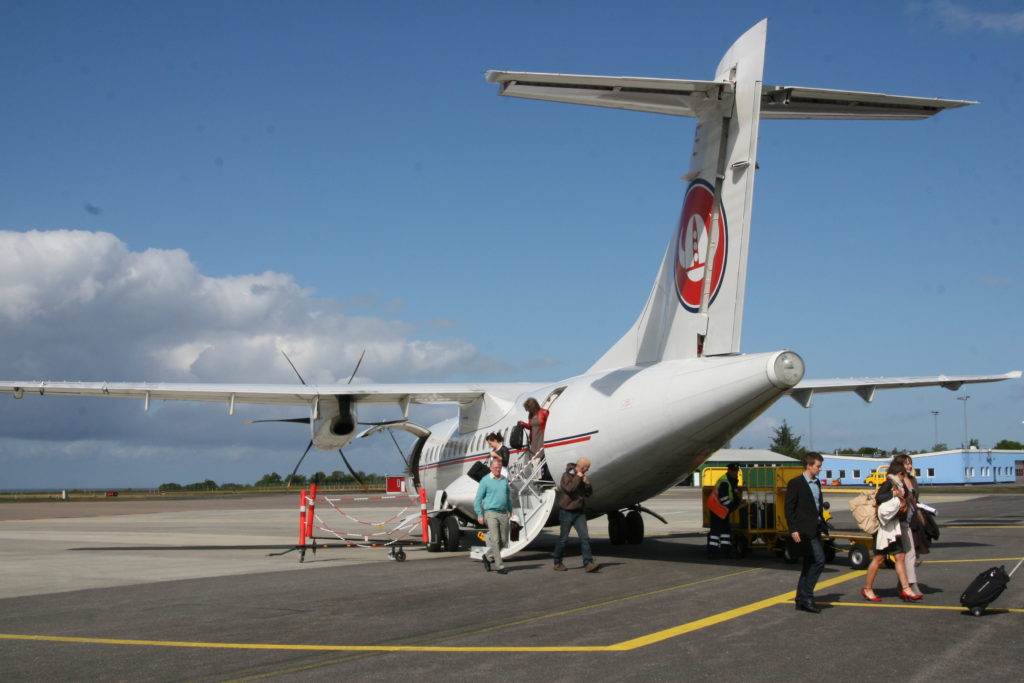
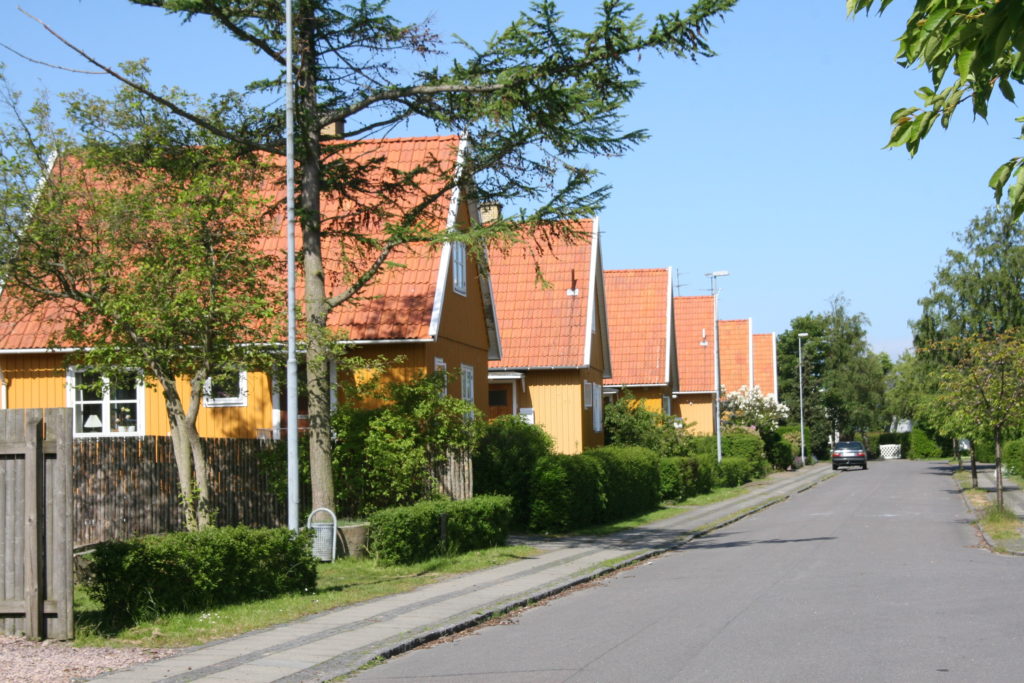
We drove to the town of Hasle which is north of Ronne on the coast. My great grandmother’s family was from Hasle and some of my ancestors worked in the coal mines that were located there. Coal mining began in 1843 and some of the mining occurred under the sea. When we visited, we saw the clay left behind from the mining days. There is a display documenting the hard and dangerous work of coal miners. According to family stories shared through the years, coal miners could sometimes hear the sea while working in the mines.
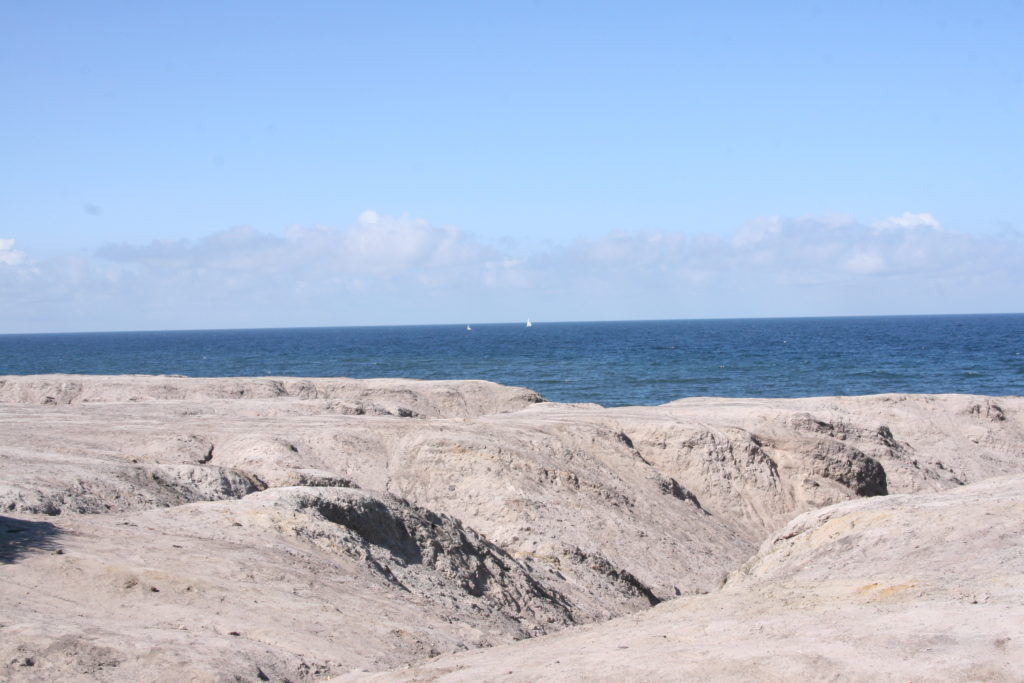
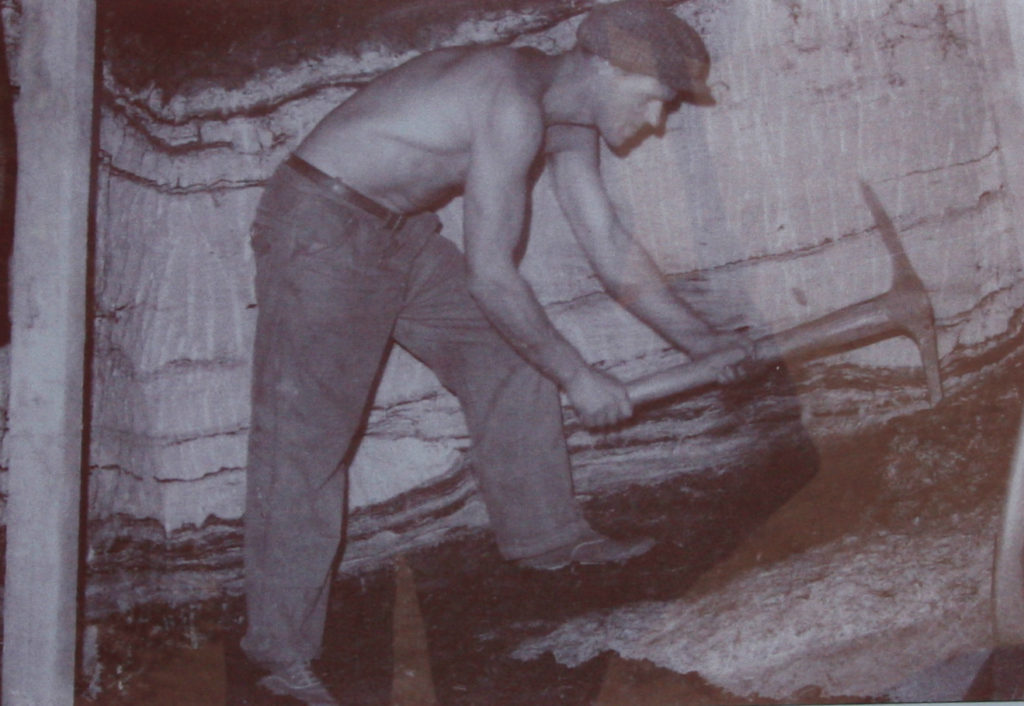
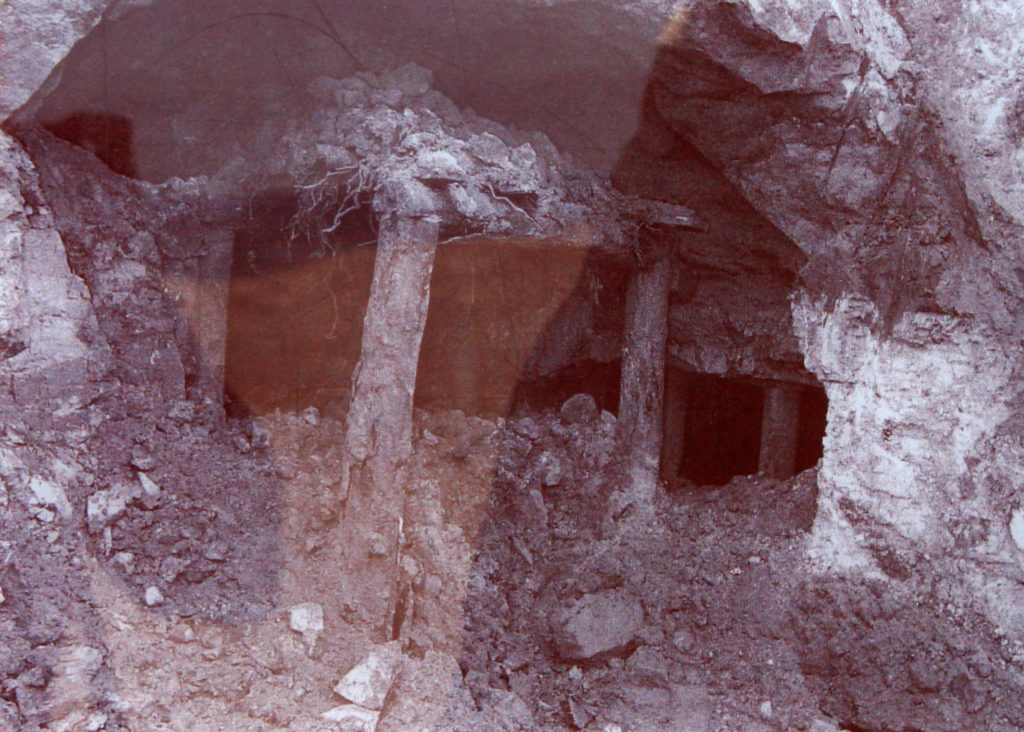
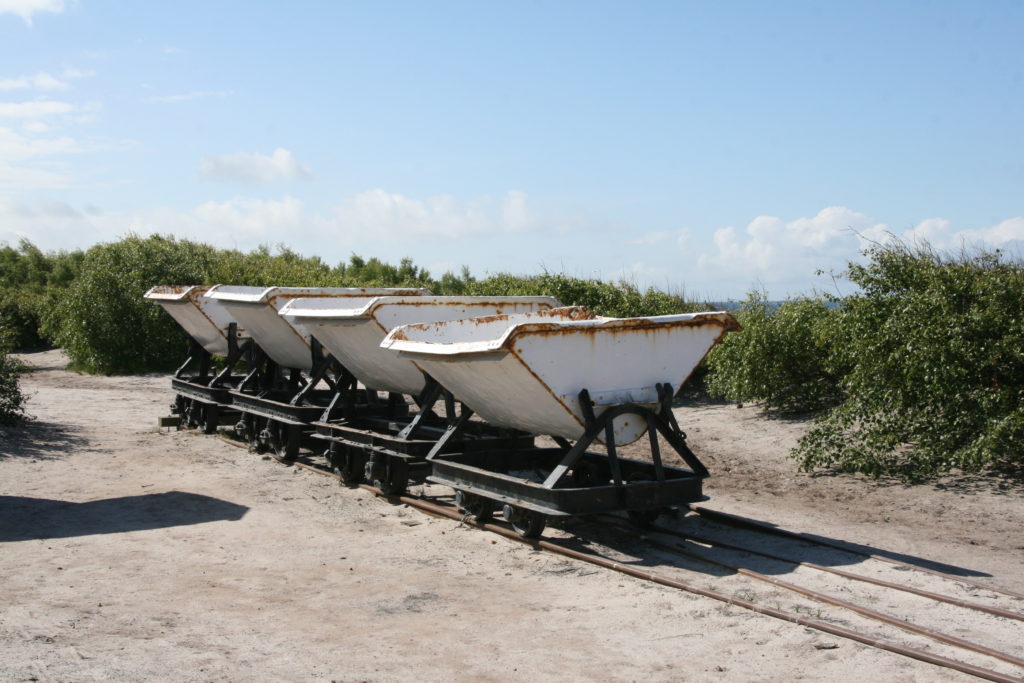
We also visited an old smokehouse in Hasle which is still in operation. We were able to watch some of the work and then sample salmon, shrimp, mussels and herring. This is a description of the smoking process:
Smoking at the Bornholmian smokehouses is done by hanging herrings or other smoked products on grills or spits over alder wood. The smoked products are placed in a chimney, which is why you will see the large open chimneys at most smokehouses. The main rule of smoking is that there must only be embers, which is why the smoking is constantly monitored. First the fish are dried over open flames for about two hours, whereafter the flames are extinguished and the fish are smoked in the thick, light grey smoke for another two hours. (https://bornholm.info/en/bornholm-smokehouses/)
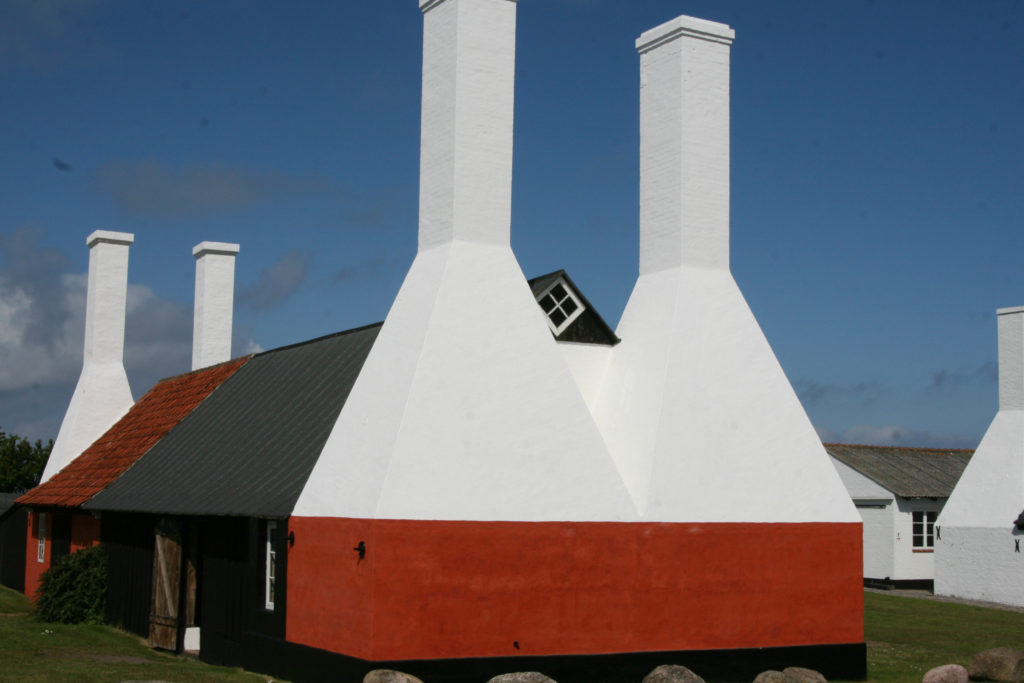
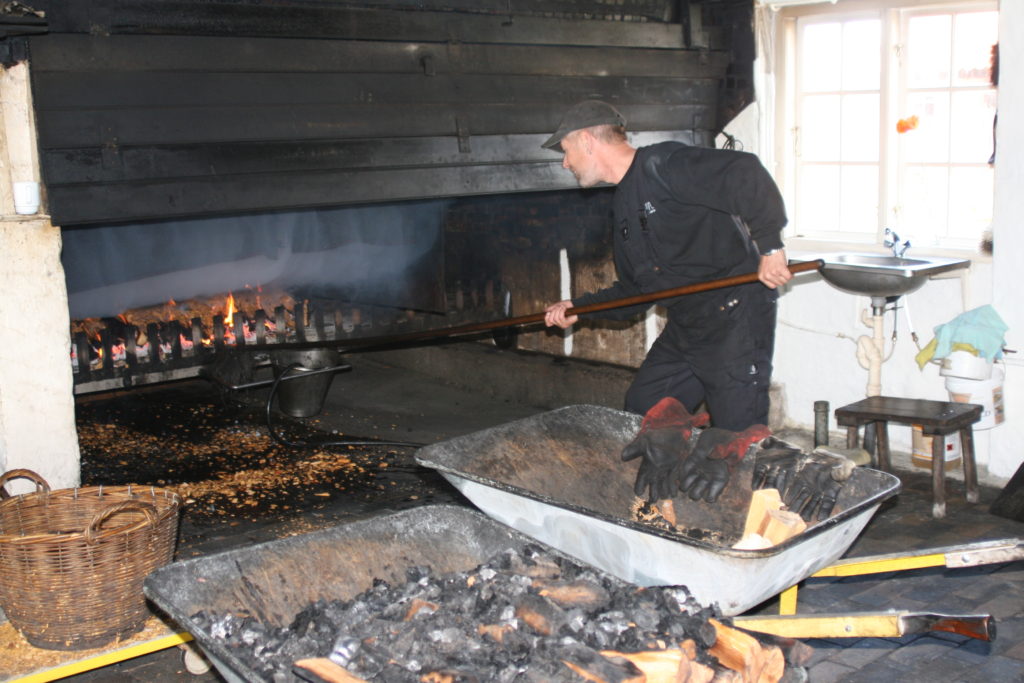
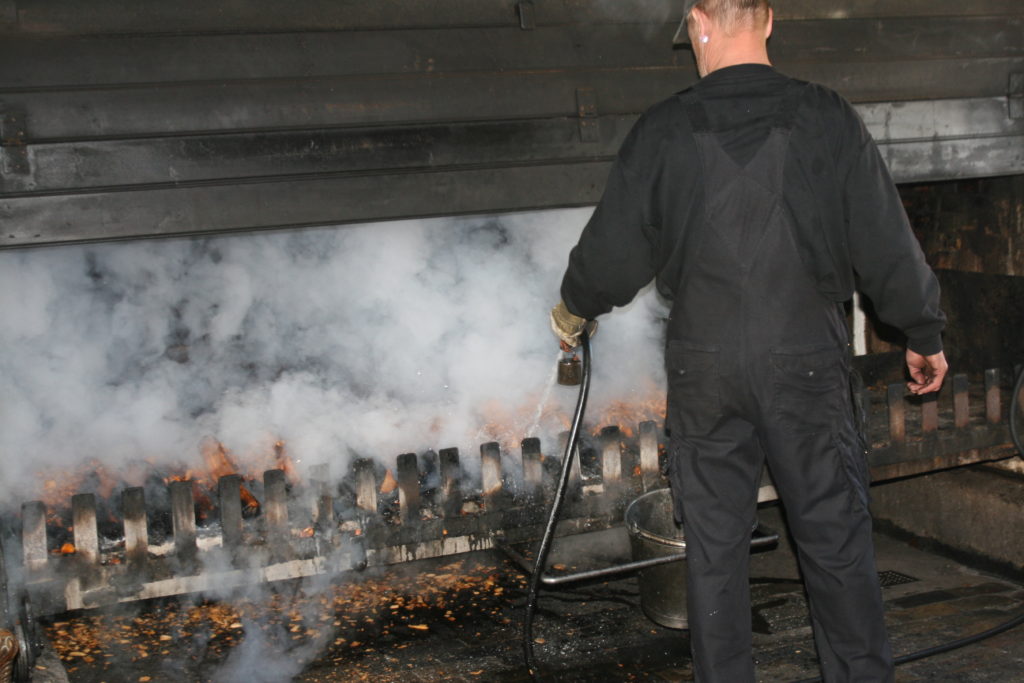
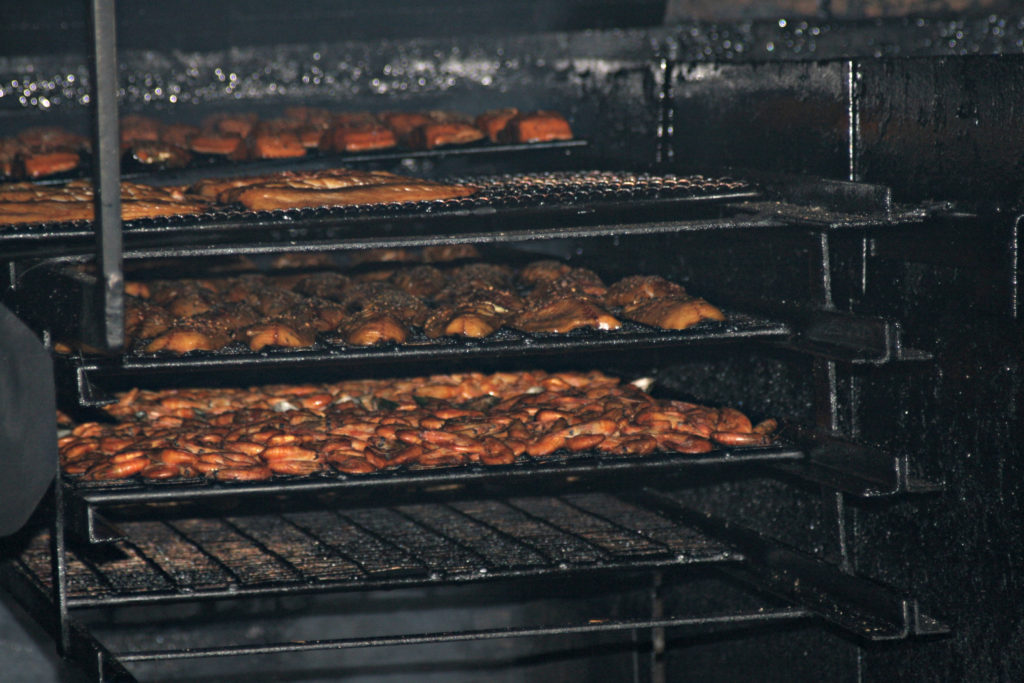
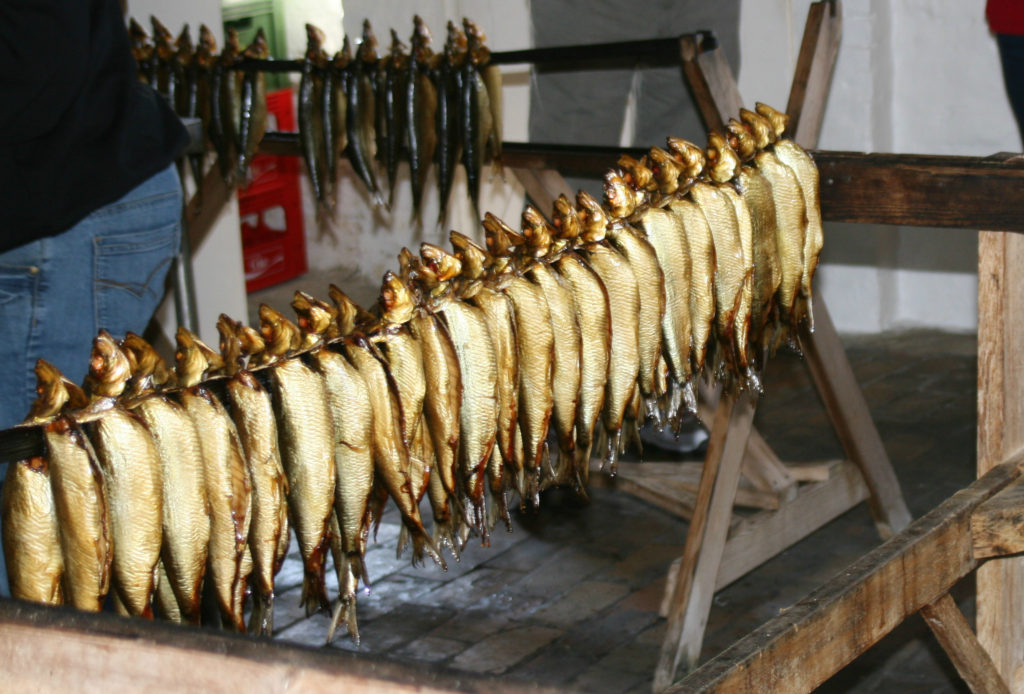
These are some of the other sites we saw while touring Bornholm. The first is Hasle Church. It dates back to the 15th Century but parts of the original structure have been rebuilt and there have also been additions to the building.
The next picture was taken near Hasle and is of a runic stone, one of about 40 on the island of Bornholm. Our guide is showing Mike information about the runic stone – the picture will give you an idea of the stone’s size. Runic stones began appearing in Denmark around the time of the Vikings – about 800AD. They usually honor noblemen who have died or fallen warriors. The stones are said to provide a great deal of information, including the person’s place in society and occupation. For fallen warriors, the stones may list the battles in which they fought.
The third picture was taken near Gudhjem and is just a pretty view. Gudhjem is on the eastern side of Bornholm. The last pictures in this section are of a working windmill in the town of Arsdale, also on the eastern side of Bornholm. The gears of the windmill are wooden and there is a troll in the rafters – said to bring good luck.
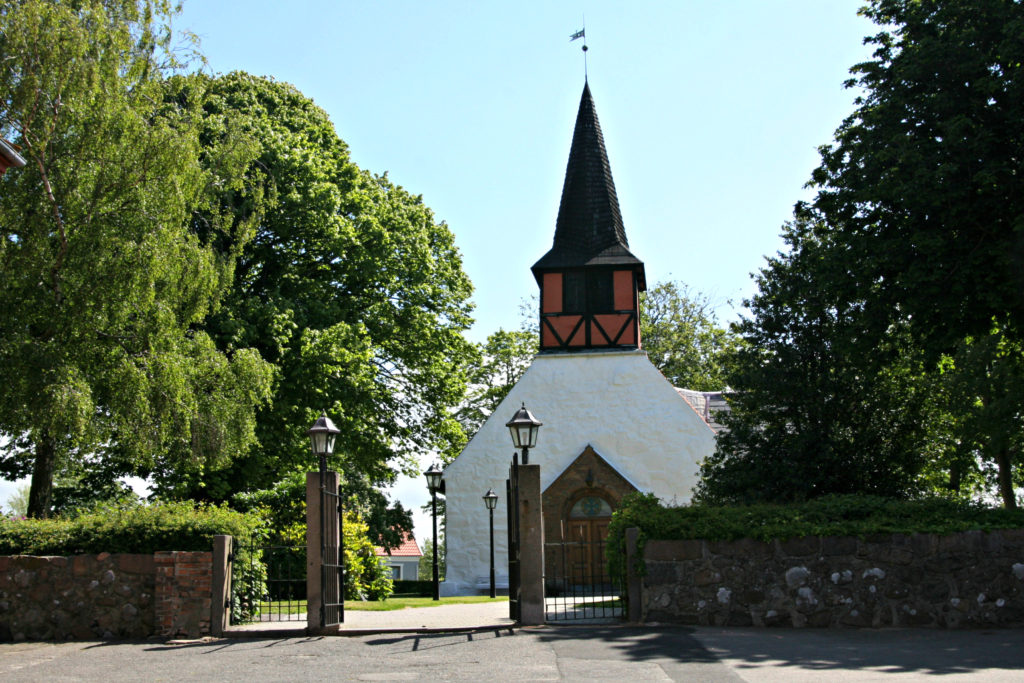
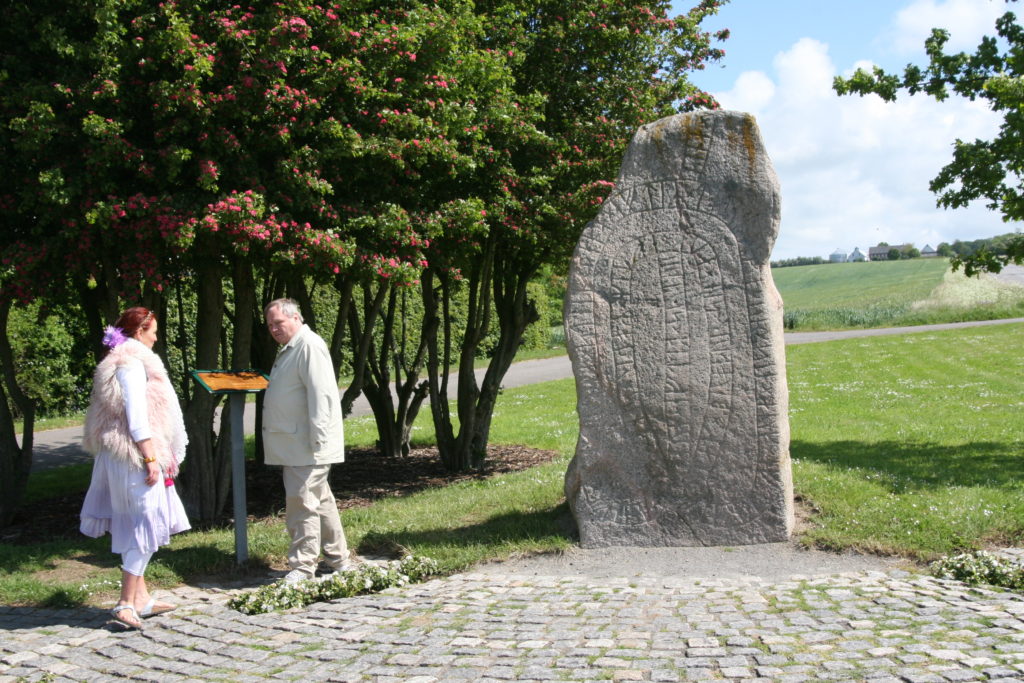
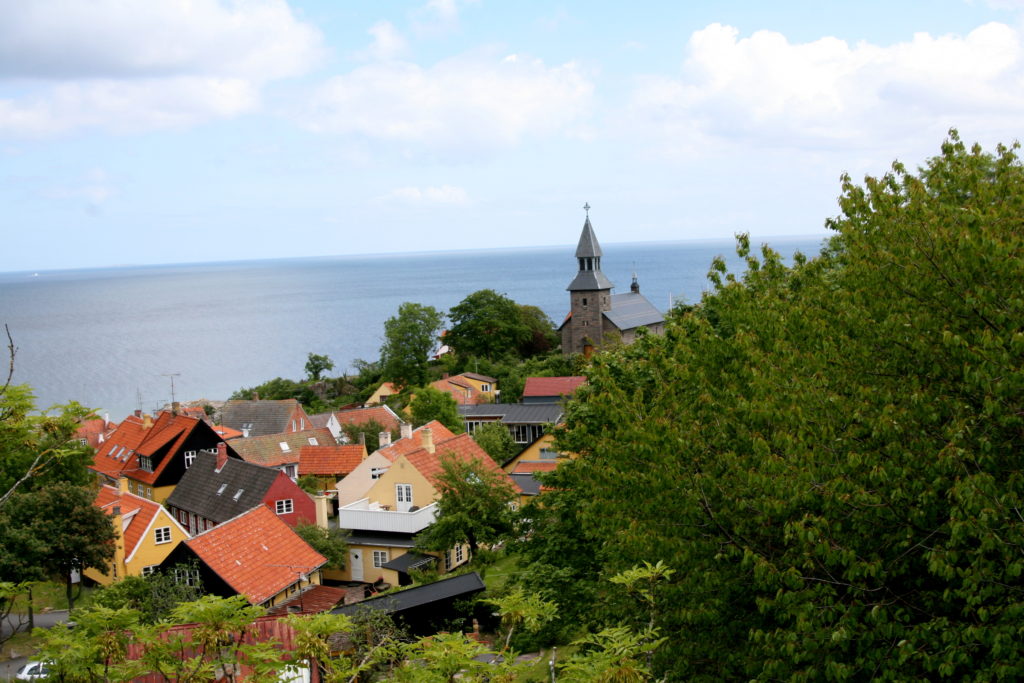
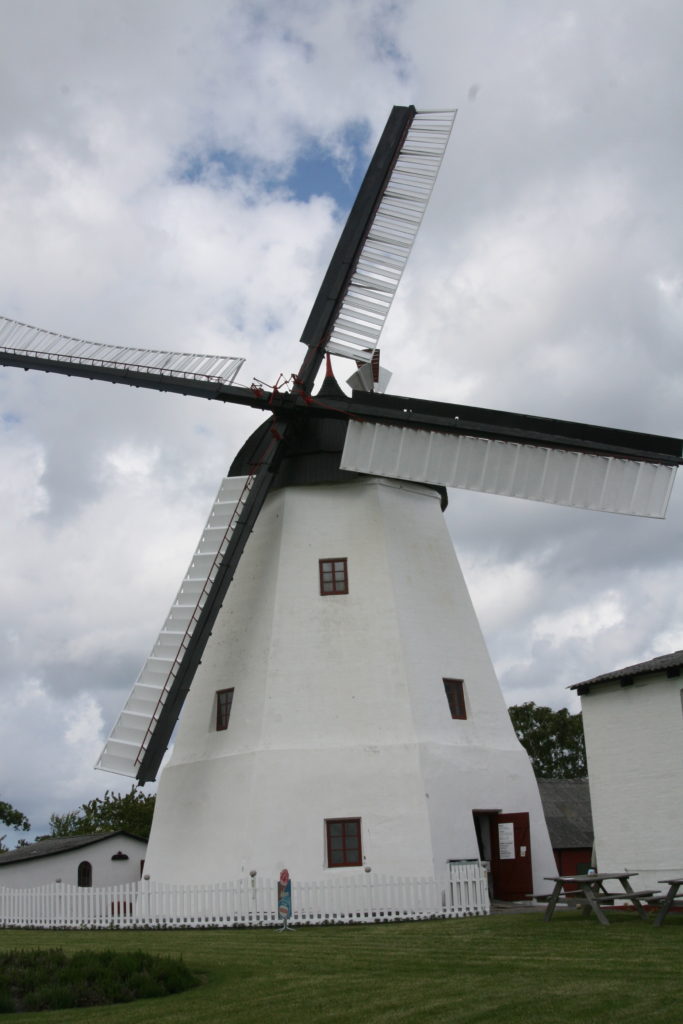
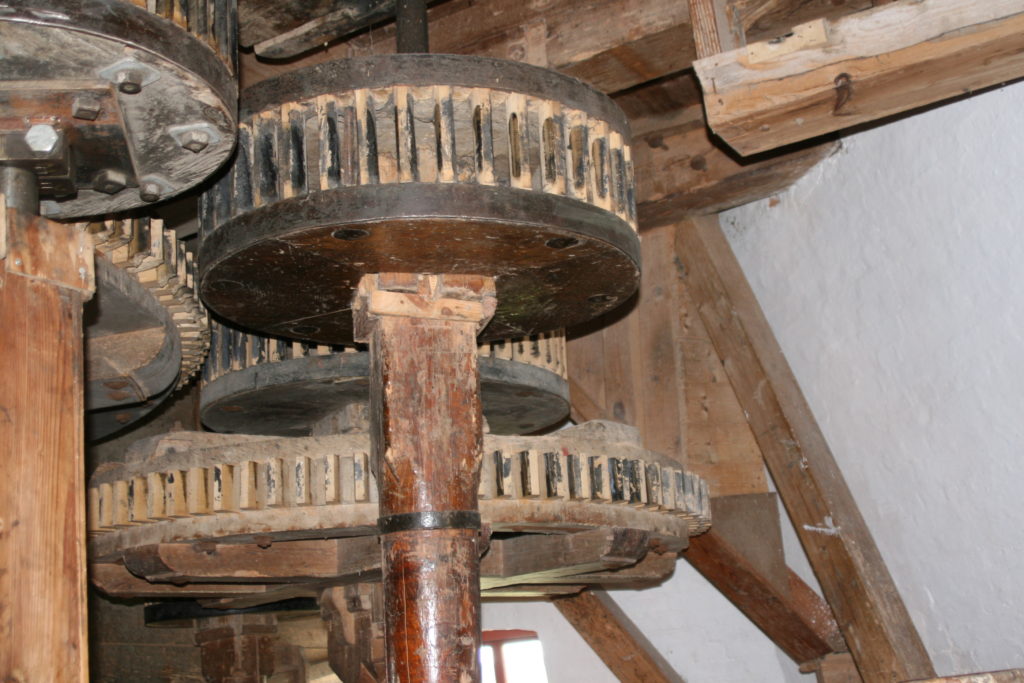
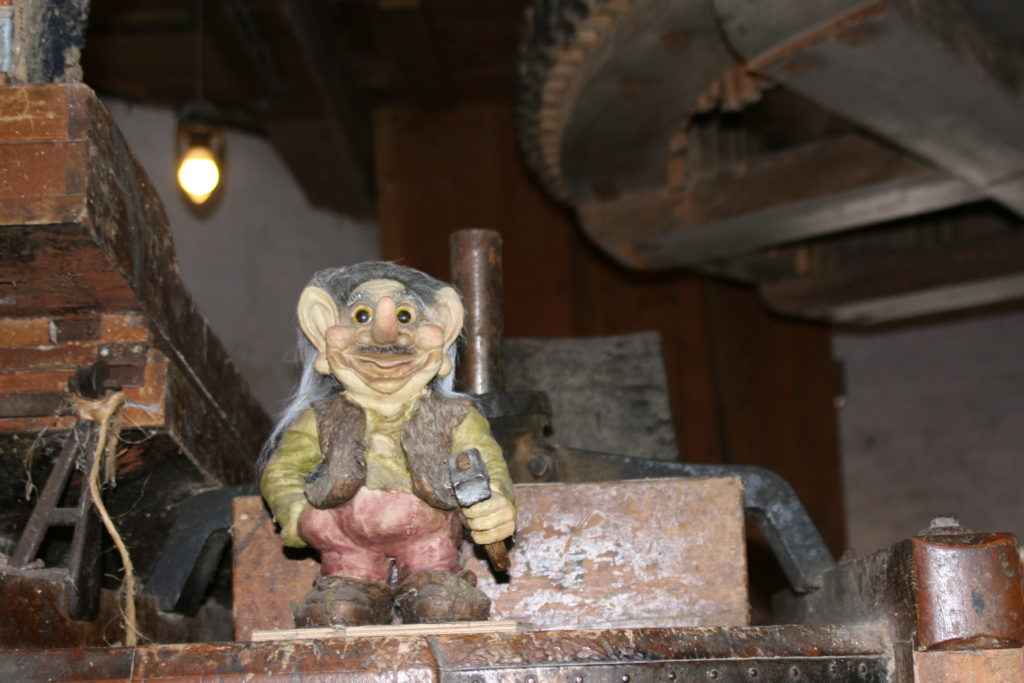
We also visited this round church in Osterlars, located in the central part of Bornholm. Our guide had found church records and learned that my great grandfather was baptized here in 1863. It is one of four round churches on the island of Bornholm and one of just seven in all of Denmark. This church is the largest round church on the island and also thought to be the oldest. It was probably built around 1160 and was dedicated to St. Lawrence (Lars in Danish). The church was originally named Lars but “oster” (which means eastern) was added to the name around 1600 to distinguish it from another nearby church named Ny-Lars.
The church has three floors, with the upper level being used for defense and a place of refuge. Notice the small openings from which weapons could be extended. The buttresses were added in the 16th Century to support the outer walls of the church. The roof was replaced in the 17th Century. The bell tower is a separate structure from the church that once served as a gate tower.
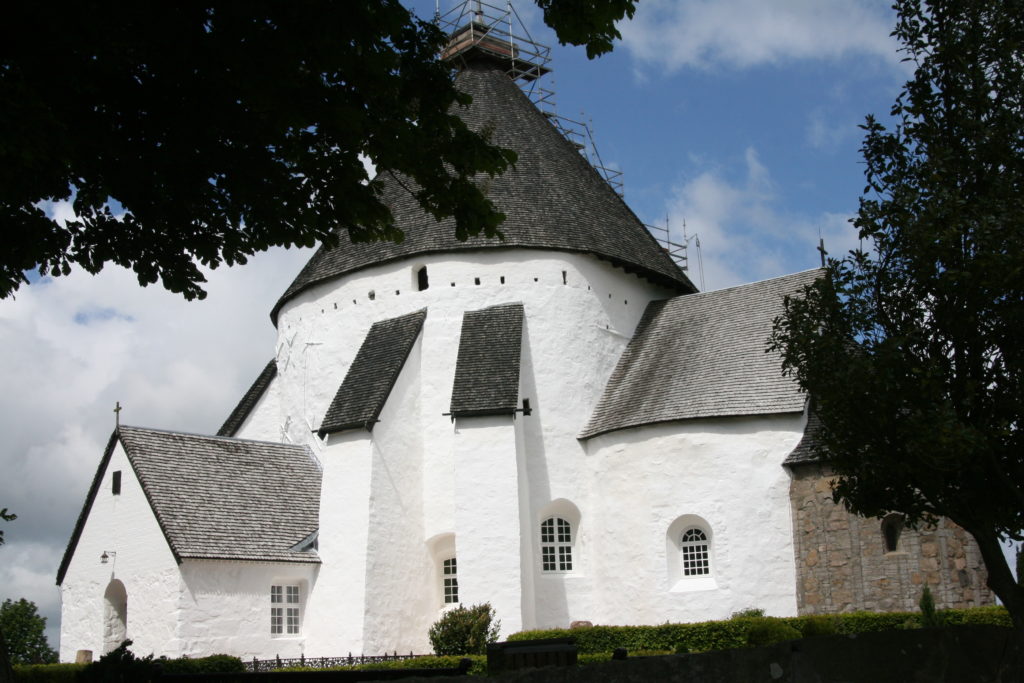
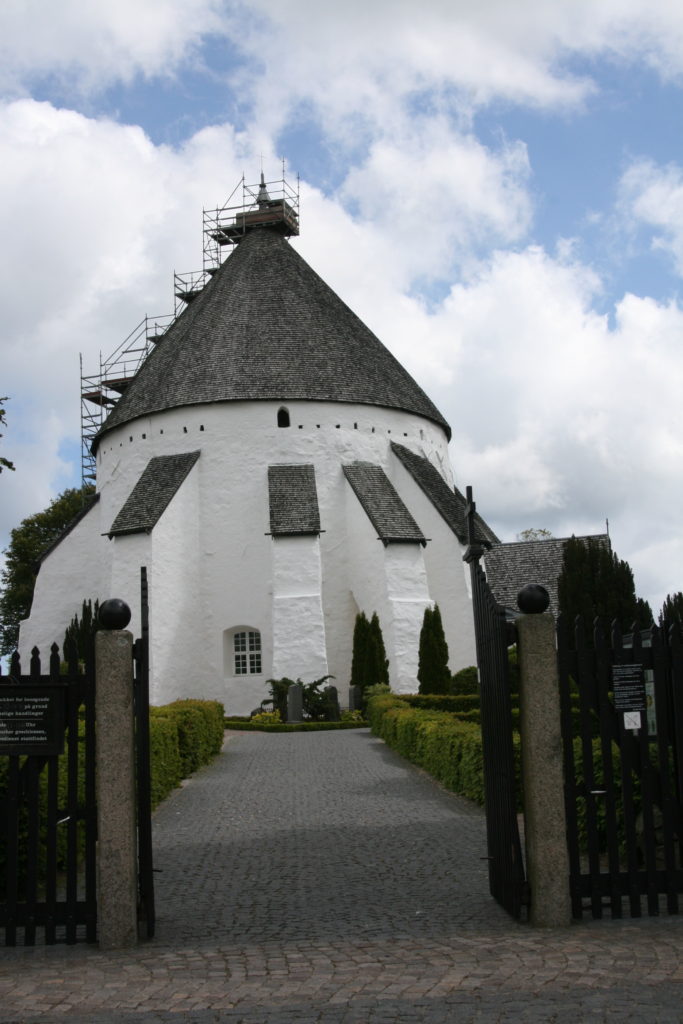
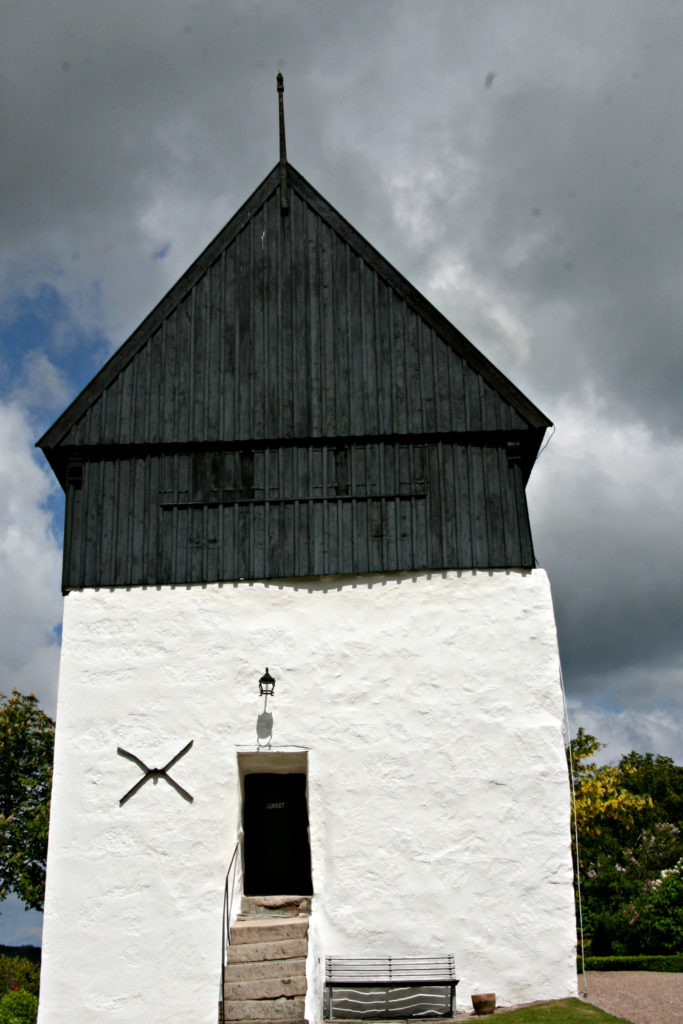
There is a central column within the church decorated with frescos dating back to 1350. These depict stories from the Bible. They were painted over with a whitewash around the time of the Reformation but discovered in 1882. They were restored in 1889, then again in 1960 and most recently in 2005. The frescoes are hard to make out in the picture, but they tell the story (moving from right to left) of the Angel Gabriel’s visit to Mary, Mary talking with Elizabeth, the birth of Jesus, and their flight to Egypt.
This central area is basically a hollow column that is almost 20 feet in diameter. At its center is the baptismal font which is shown in the second picture.
After exploring the main level of the church, we went up a very narrow, stone stairway to the upper levels. The third picture is one I took of a window that overlooks the church grounds and countryside and the final one is of a few graves in the cemetery. The Osterlars Church is still a working church as are the other round churches in Bornholm.
